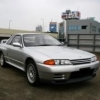John Mellor's Auto News Article
Announcements
-
Similar Content
-
Latest Posts
-
By joshuaho96 · Posted
Nominally yes but I’m not really at that stage yet. Outsourcing to Japan is also a relatively good deal at the moment because their currency has devalued much more against the USD. You would assume this but a lot has changed from the pandemic. Mechanics are in short supply and demand for fixing old cars has gone up from the cost of new cars. 250-300 USD/hr is not an unusual shop labor rate in California and you’re paying that regardless of whether the guy is competent or not. Coworkers have been quoted 3000 USD for a water pump and thermostat at a dealer on an N54. Oil changes went from ~75 USD to 150 on fairly normal cars like Civics. The cost of the oil and filter hasn’t even kept up with inflation. -
The downside to that is that the cost of everything, particularly labour, is significantly higher here than it is over there in the Disunited States of Slavery. You can hire 3 tradesmen over there for just the Ranger Raptor allowance of a single 3rd year apprentice over here.
-
Shit. Starting to look like a car again.
-
By Looney_Head · Posted
its Masterton Motorplex just over the hill out of wellington. -
R31 boot how I received the sub, cleaned and today new carpet installed. Thank you Solder!!!!
-





Recommended Posts
Create an account or sign in to comment
You need to be a member in order to leave a comment
Create an account
Sign up for a new account in our community. It's easy!
Register a new accountSign in
Already have an account? Sign in here.
Sign In Now